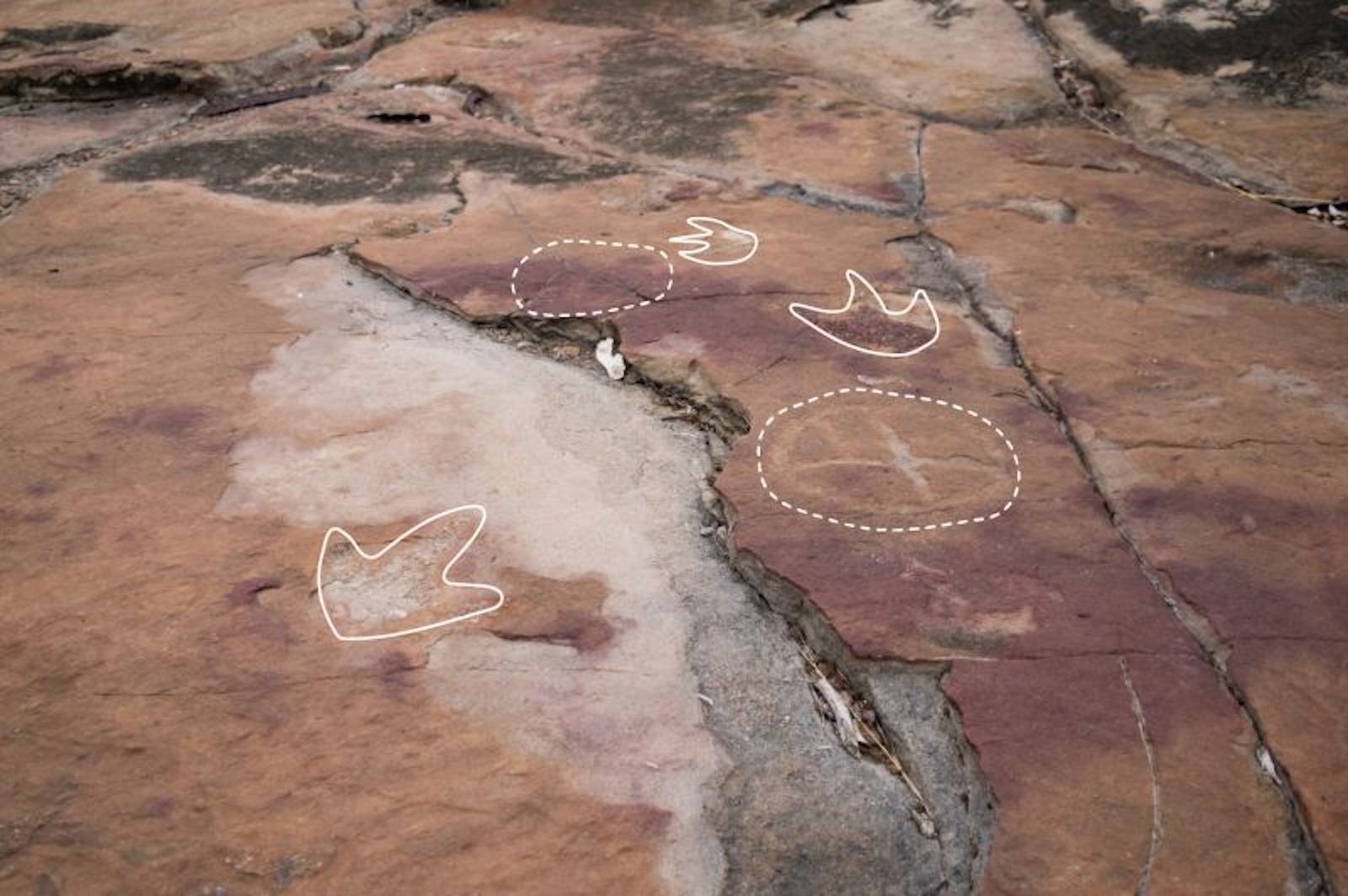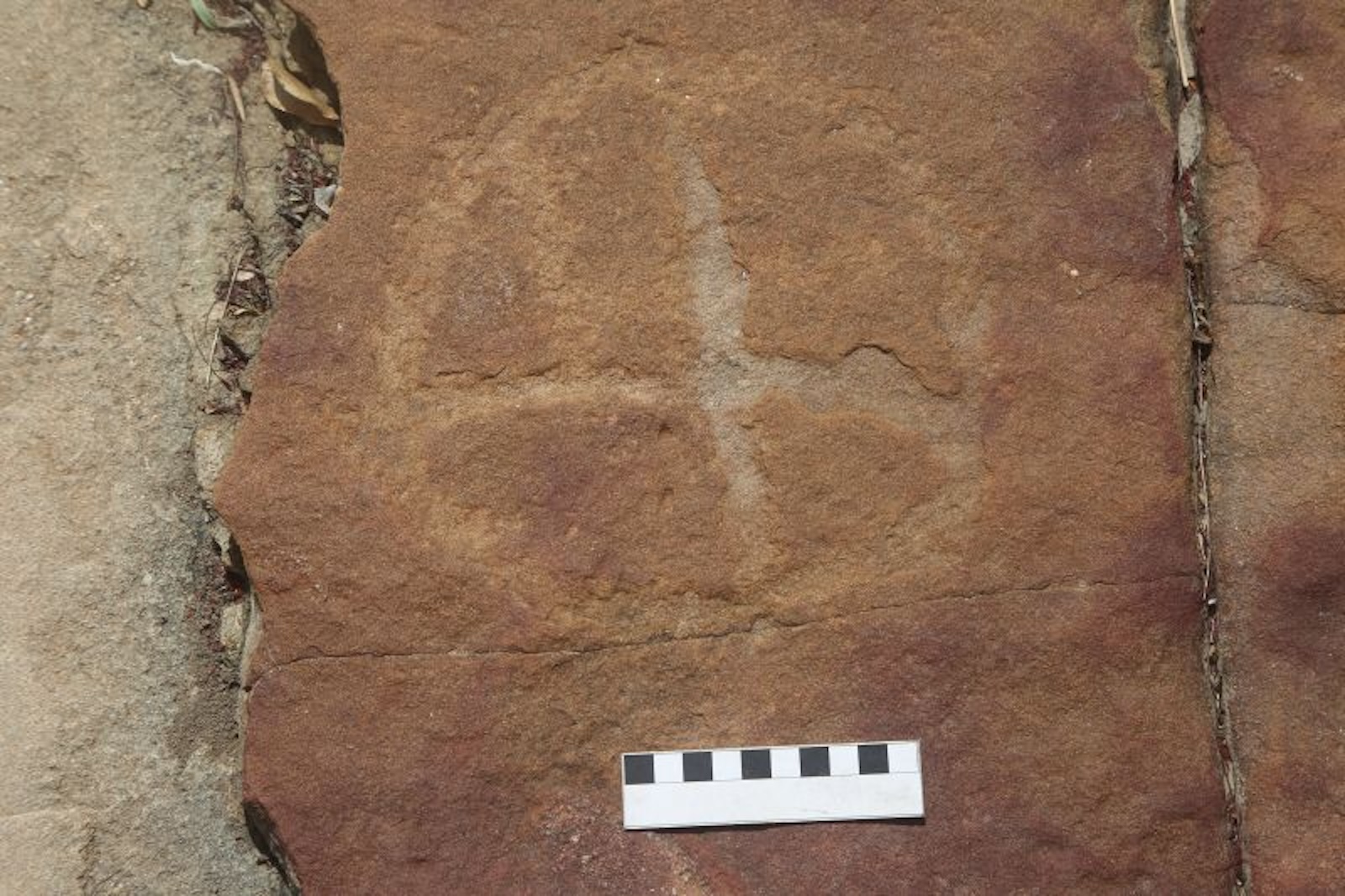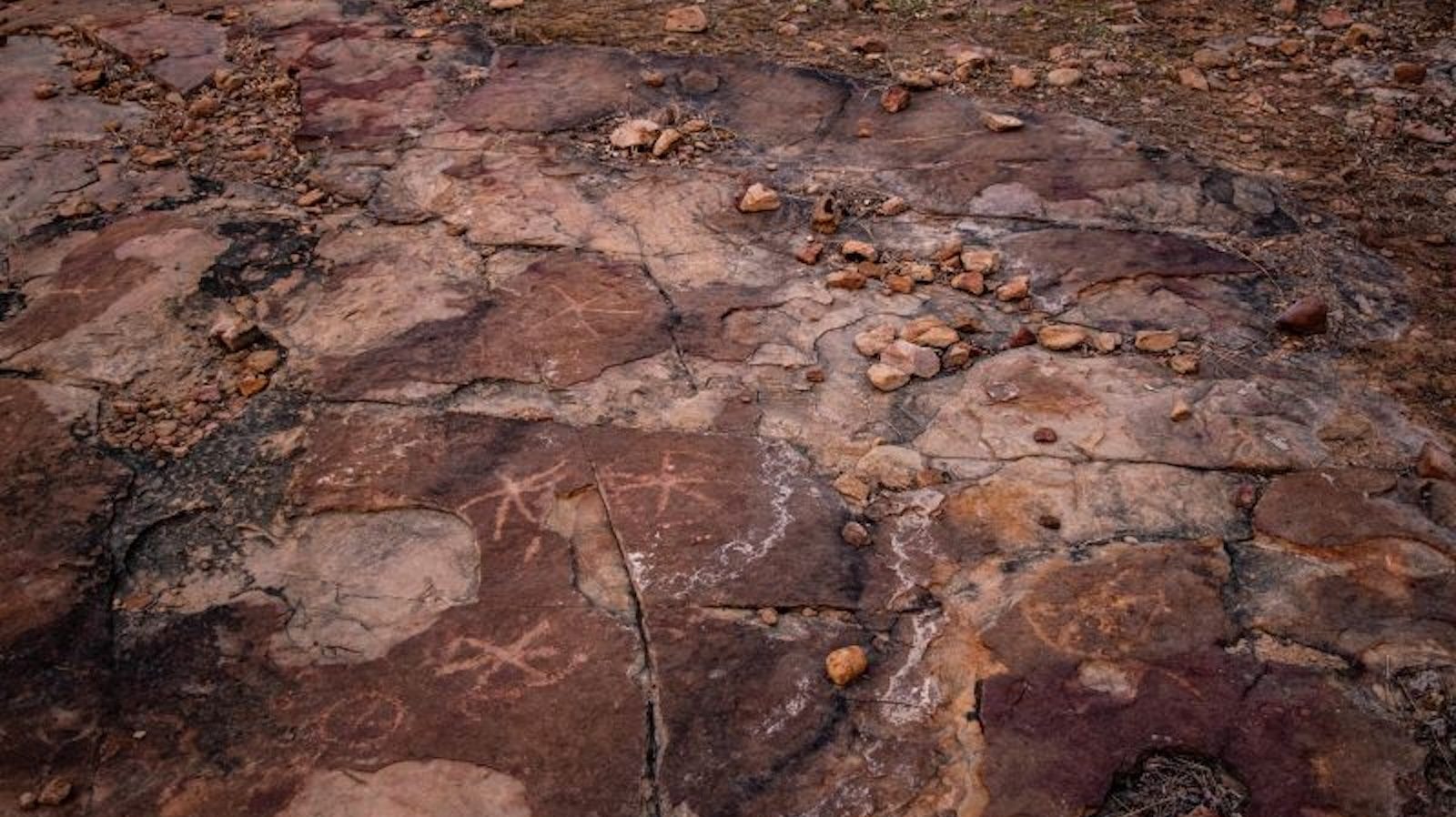(CNN) — A new study has revealed that prehistoric humans in Brazil carved drawings into rocks next to dinosaur footprints, suggesting they may have found them meaningful or interesting.
The rock carvings, which archaeologists call petroglyphs, were found at a site called Cerote do Letrero, in Paraíba, an agricultural state located in the far east of Brazil. Researchers first noticed the marks in 1975. But they have now been interpreted as being linked to footprints after recent drone-assisted field surveys, which revealed never-before-seen engravings. The footprints belong to dinosaurs from the Cretaceous period, which ended 66 million years ago.
“People often think that indigenous people were not aware of their environment or that they did not have any kind of scientific spirit or curiosity,” says Leonardo Troiano, co-author of the study and an archaeologist at the National Institute of Historical and Artistic Heritage. Brasilia. “But that's not true. It's very clear that they were interested in footprints. We'll never know if they knew about dinosaurs, but they were clearly curious about footprints and thought they were important in some way.”
The Cerote do Letrero petroglyphs are not the first examples of rock art found near dinosaur footprints, but the study's authors say they believe the unprecedented clarity of the connection between the two at this particular site could have important implications for studies of paleontology and archaeology. And archaeology. Cultural Heritage.

The dashed line indicates petroglyphs made by indigenous people, while the solid line shows the footprints of theropod dinosaurs. (Credit: Leonardo Troiano)
Geometric shapes
It is not clear how long ago the petroglyphs were made. But the study was published in March in the journal Scientific reports– It indicates that radiocarbon dating has found burials in the area ranging in age from 9,400 to 2,620 years, which indicates that the tribes that left them must have lived during that period.
“These people probably lived in small communities, using the natural rock shelters that were abundant in the area,” Troiano explains.
“This area of Brazil is like the Australian outback: it's very hot and there's no shade, so it's not easy to be there and carve the rock. It takes a lot of effort, so when they chose this place, they were very interested,” he added deliberately. “They could have used “There are many other rock outcrops in the surrounding area, but they chose this one.”
The style of the drawings is varied, suggesting that multiple artists may have been involved. Some have shapes reminiscent of plants, others resemble geometric shapes, such as squares, rectangles and circles. The circles have crosses or lines inside them, which can look like stars, according to Troiano. However, the meaning of these signs remains a mystery.
“They all look abstract, and if they represent something to the people who made them, we don't know what it is,” he added.
The Serrote do Letreiro footprints belong to three types of dinosaurs: theropods, sauropods, and ornithopods. The researchers suspect that the people who carved the rock may have mistook each other for the footprints of rhesus birds, large, ostrich-like native birds that have footprints almost identical to those of theropod dinosaurs.
It is difficult to imagine what prehistoric people would have thought about sauropod footprints, which were left behind by some of the largest herbivorous dinosaurs that ever lived and were therefore unlike any animal they were familiar with. Perhaps for this reason, the study suggests that the intentional connection between the drawings and these footprints is less clear.
Dinosaur rituals
Troiano said he believes it's possible the marks were left during mass gatherings.
“I think the creation of rock art was immersed in some kind of ritual context: people getting together and making something, perhaps using some psychoactive substance. We have a plant called gorema, which is a hallucinogen and is still used today,” he explains. “We can speculate that people also used them in the past because they are plentiful and common in the area. I think they were interested in what the footprints represented, and I assume they identified them as such. They realized they were not random.”
There are other sites, Troiano says, that have petroglyphs near dinosaur footprints — in the United States and Poland — but they don't appear “anywhere near the same level of intentionality,” he said. Intent is defined not only by the proximity of drawings to prints, but also by whether or not they overlap with them. The study suggests that if they do not overlap, this indicates “thinking” on the part of the creators.
Troiano added that he is working on preparing a subsequent article that will delve deeper into the interpretation and analysis of the Cerote do Letrero rock inscriptions, based on the conclusions of the current study.
The direct association of the drawings with fossil dinosaur footprints is unique and may shed more light on the significance, meaning and importance of rock art, according to Radoslaw Palonka, an associate professor of archeology at Jagiellonian University in Krakow, Poland, who has worked on similar research. Petroglyphs but were not involved in the study.
“The fact that the locations of the rock art paintings were specifically chosen is evidenced, among other things, by the fact that representatives of the communities that created the rock paintings or petroglyphs often placed them in close proximity to ancient images left by other cultures,” Palonka said. By email. “This was the case in several parts of the world where rock art was practiced, and is very evident in, among other regions, in the American Southwest/Southwest USA, where my scientific interests are focused.”

This rock carving is the most visible and visible at the site, according to Troiano. The circle is divided internally by lines and is large. (Credit: Leonardo Troiano)
Jan Simek, distinguished professor of anthropology at the University of Tennessee, Knoxville, agrees. “The work provides an interesting new example of how ancient people observed and incorporated landscape fossils into their religious experiences and interpretations,” said Simic, who was also not involved in the study of the new petroglyphs.
“(Stanford University) historian of science Adrian Mayor has explained how the ancient Greeks and Romans looked to fossils as evidence of giants and monsters from their own myths and how indigenous North Americans looked to their original accounts in the fossils, which they observed scattered throughout their landscape,” Simek said via email. Email. “The case of Brazil is another archaeological example of this very human tendency to connect the spiritual world created in the imagination with inexplicable things in the world around us.”

“Proud web fanatic. Subtly charming twitter geek. Reader. Internet trailblazer. Music buff.”

:quality(85)/cloudfront-us-east-1.images.arcpublishing.com/infobae/TEQF6EONZRFGLLLDIDD4L2O4EE.jpg)

:quality(75)/cloudfront-us-east-1.images.arcpublishing.com/elcomercio/XU32LRAEZFDDPNVHLFU3CKVBYY.jpg)



More Stories
How to create 3D videos with my iPhone, it will be very useful even for your business
NASA discovers an anomaly in the Earth’s magnetic field that could have serious consequences for humans
Can the Earth be divided into two parts?